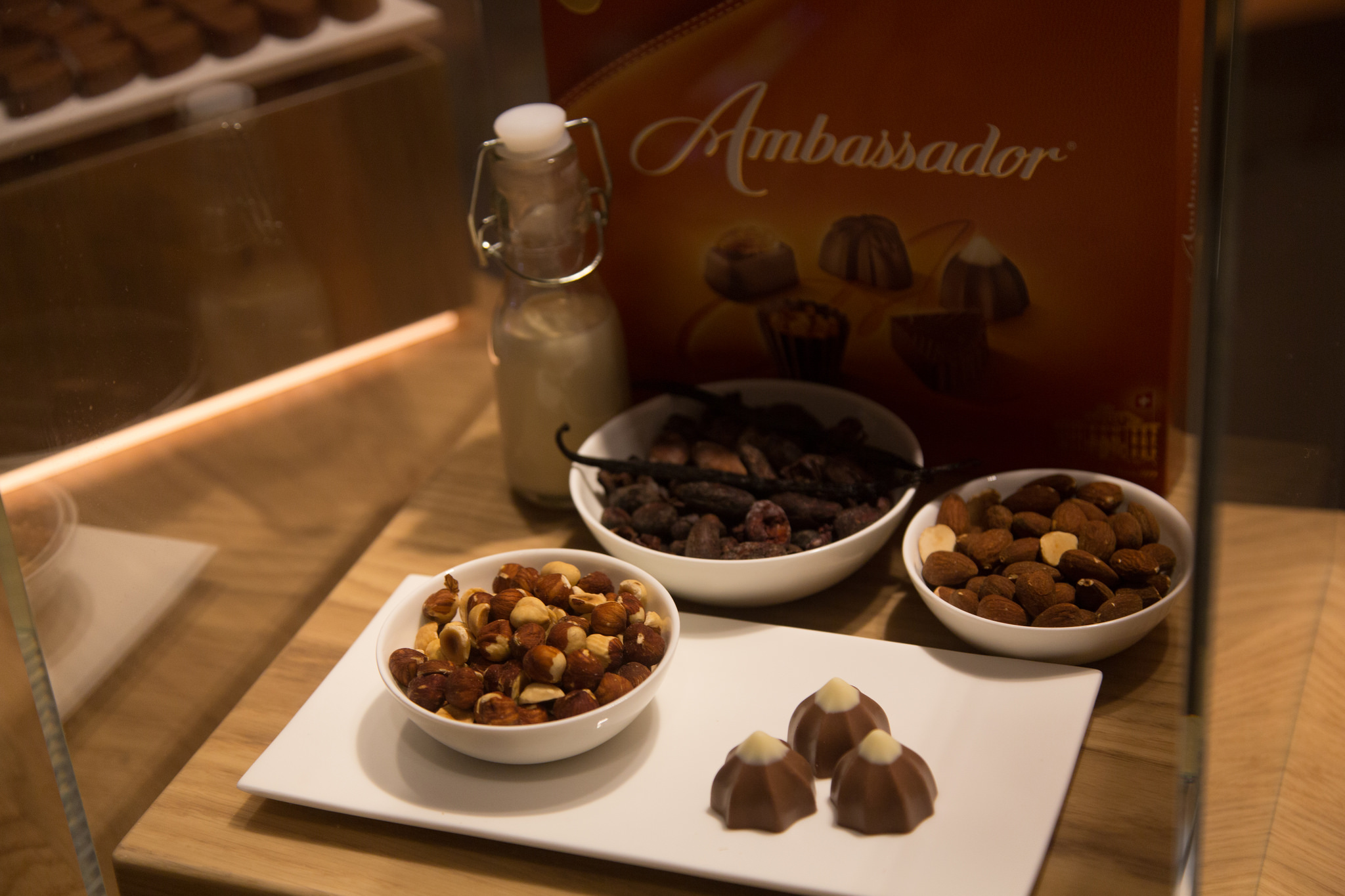Switzerland can be divided into four regions, each with its own language and culture. Despite their distinctive personalities, each honors local foods and culinary arts. As the country with the most Michelin stars per capita, the Swiss love to tickle the palate and another way to dine is on the fresh foods found through Switzerland's various markets, held in each town once or twice a week. Farmers, butchers, bakers and cheese makers showcase their wares at markets in Bellinzona, Chur, Basel and Solothurn. The Open-Air museum in Ballenberg keeps the history of food alive. From spring to autumn, you can watch sausage, cheese, chocolate and bread being made and take some home with you. Don't miss the opportunity to eat at Schauenstein, a hotel restaurant in Fuerstenau in Graubuenden, recently awarded a third Michelin star.
Beyond the restuarants, here’s how you can experience the rich culinary delights of Swiss cuisine.
Chocolate
In Switzerland, children indulge in bread and chocolate as their afternoon snack. The Swiss have created a whole manufacturing industry that includes truffles, pralines, mousses, and cakes. In 1819, François-Louis Cailler opened one of the first chocolate production facilities in Corsier near Vevey to create the oldest brand of Swiss chocolate still in existence today. One way to indulge in chocolate is on The Swiss Chocolate Train, a genuine 19th century Belle Époque Pullman car that travels from Montreux to medieval Gruyères. You'll pass a cheese dairy, a castle and the Cailler-Nestlé factory in Broc on your ride.
You should also visit at least one chocolatier to get a true feel for how the delicacies are made, take a tour, taste some treats, and load up on desserts to go. Chocosuisse represents 18 different chocolate makers large and small across the country. Some that are open to the public include Cailler-Nestlé, seasonally April through October; Alprose, open daily, and Maestrani, Monday through Saturday, year-round.
Wine
Switzerland features more than 50 grape varieties for wine-making. You can travel to the Valais to taste the Petite Arvine and Amigne (white), the Humagne rouge and Cornalin (red); or to the shores of Lake Geneva for the red Petit Robert; or to Lake Zürich for the white Räuschling; or to the Bündner Herrschaft, where the Completer grows. Visit vineyards with vines so young they're just ripening in the Western Swiss shores of Lakes Geneva, Neuchâtel, Biel and Murten, and along the valley of the Rhone in the Valais.
For a scenic tour, choose the Lake Geneva region. There you can find the Lavaux vineyards and sample wines in the Caveau des Vignerons in Lutry. For the highest vineyards in Europe, try Valais where Visperterminen is located. You can taste 500+ local wines at Château de Villa in Sierre. In the southern part of Switzerland sits Ticino with its wine trail between Gudo and Biasca. Stop in at one of the grotti (traditional inns) along the way to sample delicious blends.
Cheese
Swiss Cheese is a household name, although the country is actually home to more than 450 varieties of cheese. Each tasting a little bit different, they all start from the same source - Swiss cows grazing on grass in lush meadows. Look for Emmentaler AOC; spicy Appenzeller; smooth, soft Vacherin Mont d’Or AOC; tangy cheeses such as Sbrinz AOC; aromatic ones like Le Gruyère AOC; or Tête de Moine AOC, which can be shaved into ornate rosettes. The best way to taste a variety is at a weekly market found in every city. Visit the cheese maker stands to find wheels ready for purchase.



